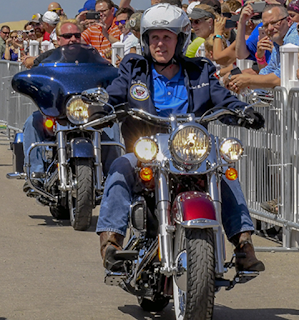Search Engine Optimization can seem daunting - but with more than 3.5 billion searches per day on Google alone - it’s an important part of any well rounded digital marketing strategy. To get you started, we’ve compiled 7 helpful tips that will get you started.
1. Never forget that your website is your storefront
Search Engine Optimization begins with your website. It represents your business as a whole and it’s perceived on the worldwide web. The purpose of your website is not only to share your available units - but also rank well within Google’s search results so Internet users can find their dream bike.
A few quick tips:
- 400 words on your homepage at a minimum
- Include all of your dealership addresses, telephone numbers, and cities you serve
- Optimize your metatags: title tags, H1, meta description to emphasize your dealership OEM inventory
- Include a search bar and social sharing plugins to improve your social media marketing efforts
2. Develop a content strategy that focuses on your core business.
Blogs and news sections are great ways to keep users engaged - especially when you’re providing them with helpful content relating to your product. So, for instance, if your customers are avid travelers - write about popular rides or have them share upgrades they've done to their bike with you.
Weekly blog entries of around 350-500 words are a great way to get started - but keep in mind that longer articles with relevant details do tend to rank higher in search results. And no matter what - make sure to always tailor your content to your audience: bike enthusiasts.
Topics may include:
- Local meetups
- Motorcycle events
- Motorcycle maintenance
- Motorcycle reviews
3. Develop your Google My Business page
Google provides a local business page, which is a quick and easy way to put your business prominently within Google’s ever-growing search results. Additionally, these listings ensure your company has the correct information online, making it easier for individuals to find your dealership and view your available inventory.
4. Tell search engines your website sells bikes with schema/rich snippets
Schema mark-up is additional code on your website which not only allows search engines to index the text on the website pages, but also comprehends what they mean. It provides labels to items on the page. This allows you to identify you site as one that sells bikes, rather than a content website which just writes about them.
5. Build up your citations - and no, we are not talking about traffic violations.
Web citations are mentions of your business name on the web and serve to enhance your web authority, reputation - and ultimately, consumer trust. These citations speak volumes to the search engines and will help your website rank better, improving your overall web presence. Taking advantage of Facebook, LinkedIn, local business directories, and Yelp will give you citations and expand your online reputation.
6. Understand where your traffic is coming from
Regularly checking reports to identify your top landing pages, keywords, and referrals driving your traffic can help your business tremendously. Understanding your analytics will give you incomparable insight into how consumers are getting to your website and where they go once they get there.
7. Make sure your site is ready for the mobile revolution
A mobile-friendly website allows users to view your website and inventory no matter what device they prefer. On Cycle Trader - we have found that 55-60% of all web traffic visits are accessing our site from mobile devices - and we image they are coming to your site the same way. Site speed and design are key factors in keeping your users engaged, allowing them to quickly and easily navigate your website to find their next bike.
By implementing some of these tips and tricks - you’ll be well on your way to an effective SEO strategy, taking away most of the guesswork and inevitably helping your online marketing efforts.
And just so you know - Cycle Trader spends a lot of time and effort optimizing our listings for search engines - so we’re already doing some the heavy lifting for you. So even if you don’t have an SEO expert in-house, you can rest easy knowing the we’ve got you covered - and motivated, potential buyers will still be finding your inventory through Cycle Trader.




















